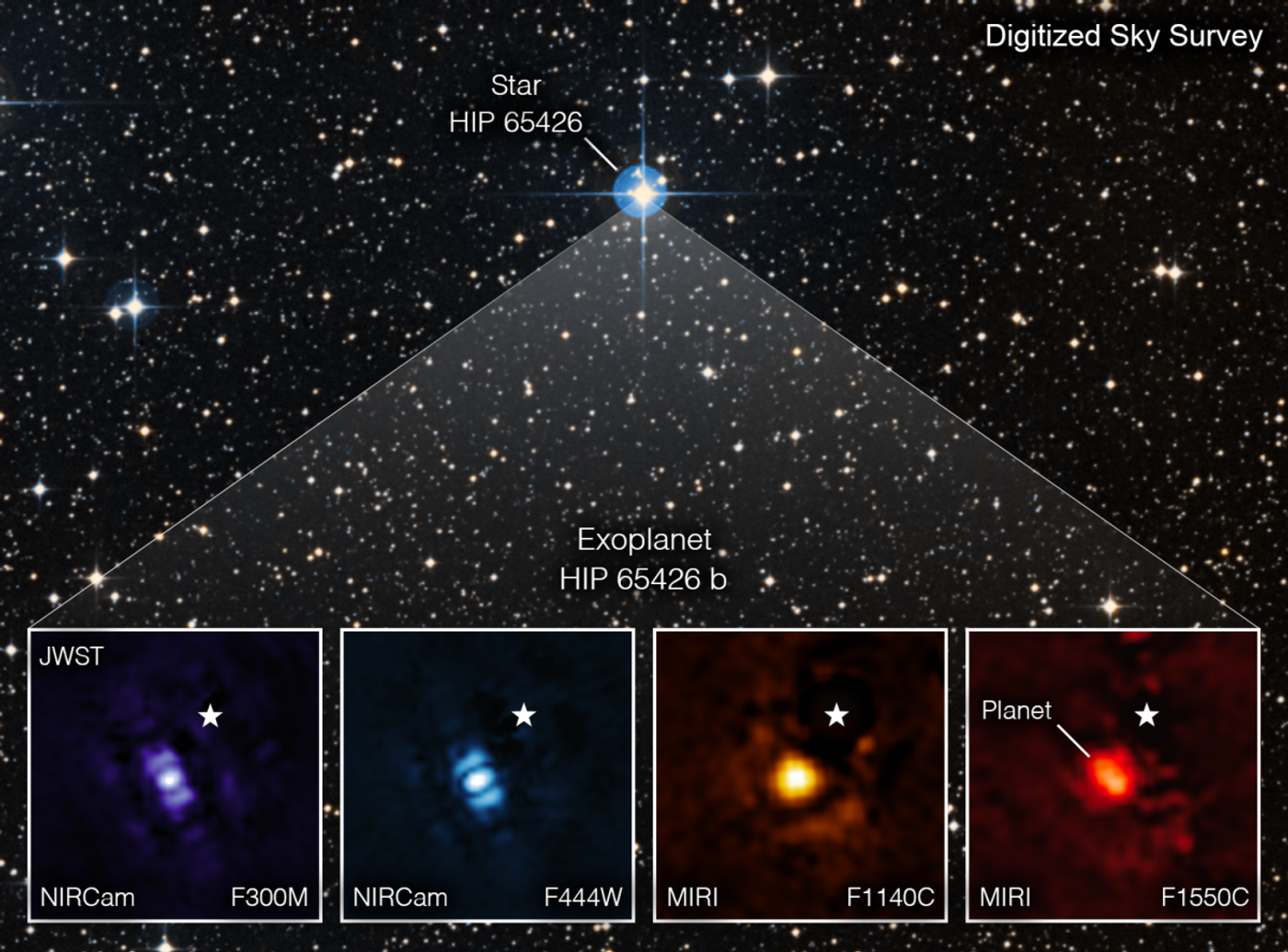James Webb Space Telescope Sees Its First Exoplanet
The James Webb Space Telescope sent back its first image of an exoplanet, the first one taken from space.
The JWST launched on December 25, 2021, after many delays. Its mission: photograph the universe in resolutions we’ve never seen before.
In July, NASA released the first full-color images from the JWST. They showcased distant galaxies, star-forming regions, and galaxies. This newest picture features an exoplanet, the first one taken by the telescope.
Exoplanets are planets outside our solar system, and only a few have been directly imaged. This one, known as HIP 65426b, is a gas giant six to 12 times the mass of Jupiter.
HIP 65426b was first discovered in 2017 by the SPHERE instrument on the European Southern Observatory’s Very Large Telescope in Chile. At that time, the images were taken in shorter infrared wavelengths, NASA explained in a press release on September 1.

HIP 65426b was captured at four different bands of infrared light. Each image is also masked by a coronagraph, a type of filter that block’s the host star’s light from the exoplanet’s image. In this case, HIP 65426b is about 100 times further from its star than the Earth is from our sun, so it was easier to remove the sun’s light via coronagraph.
Researchers plan to submit their research to a peer-reviewed journal, but for now, we can all marvel at these astounding images.
Sources: NASA JWST








